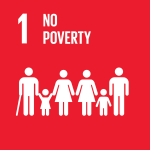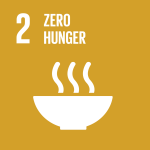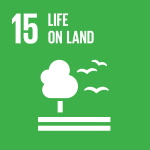
Across Belize’s southern districts, cattle farmers are rethinking how they manage their land. Faced with harsher dry seasons and declining pasture productivity, many are turning to new practices that protect the forests they depend on. Among the most promising is silvopastoral systems – an approach that integrates trees, plants and livestock on the same land to create resilient, climate-smart pastures. In tropical forest regions like Belize, this approach helps maintain ecological balance while providing reliable grazing for cattle that many families depend on for food and income.
Agriculture and food production contribute 35 percent of Belize’s national GDP. The country’s south—particularly the Toledo District—hosts one quarter of Belize’s farms and has the highest concentration of smallholder farmers, with around three quarters cultivating less than 20 acres.
To support these farmers, the Belize Livestock Producers Association (BLPA) is working in the Toledo and Stann Creek Districts to promote innovative and regenerative farming methods. With support from the UNDP-Adaptation Fund Climate Innovation Accelerator (AFCIA), the association introduced silvopastoral systems—an important shift away from the traditional milpa system, where grazing land was often created through slash-and-burn clearing.
“Growing up with my father, the only thing that he taught me was to do the slash and burn system. But BLPA has taught me, I no longer need to chop all the trees anymore. I’ve learned that trees are very important for livestock animals to provide shade for them.” – Felipe Ba, farmer from the Dump Community, Toledo District
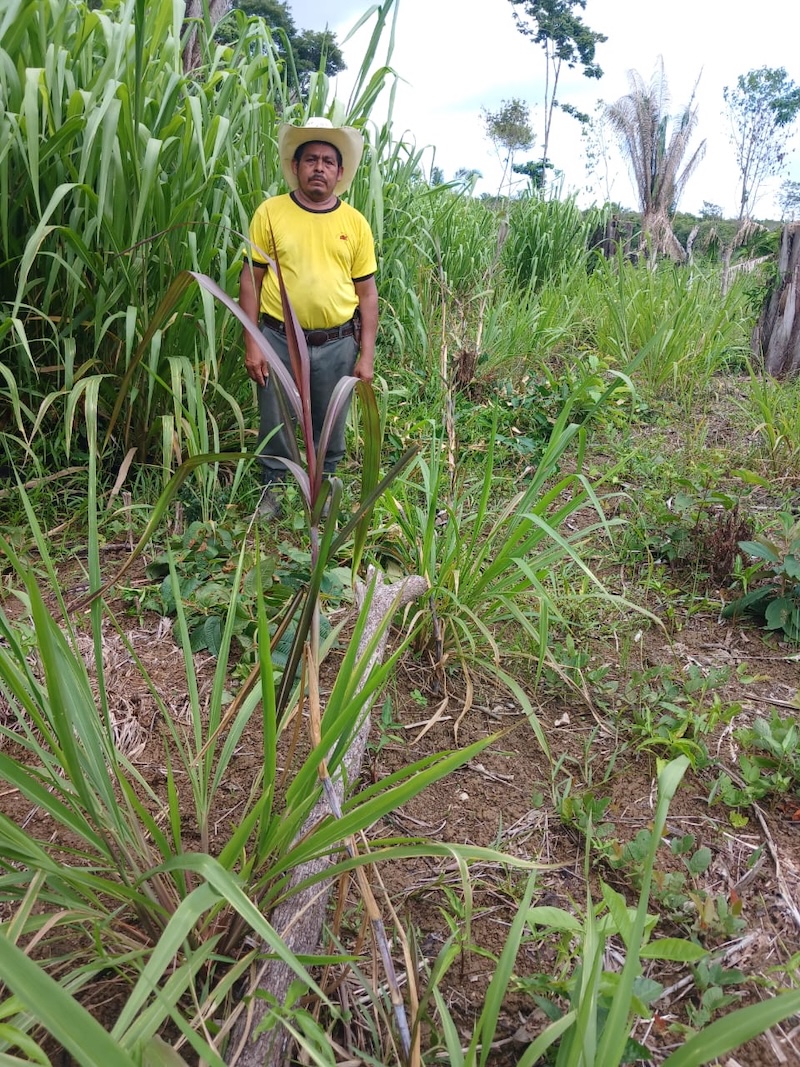
Farmer Felipe Ba standing in his newly established forage bank consisting of Mombasa grass. Photo: BLPA
BLPA has supported 114 farmers—30 of them women—in adopting silvopastoral practices. The association set up four farmer field schools and rehabilitated 46 hectares of pasture, where grasses now reach three feet in height.
Training farmers for change
To help farmers adapt to new methods, BLPA collaborated directly with communities to design a practical training curriculum. The curriculum highlights key components of silvopastoral systems, including forage banks, seed banks and tree-rich pastures.
Forage banks are areas of improved grass and shrubs that secure feed for livestock during the dry season. They also serve as seed banks, helping farms expand or share improved grasses with neighbouring farmers. Pastures with trees offer shade and better diets for animals. In fact, pastures with trees can support better animal health, reduce land pressure, boost income and help prevent deforestation.
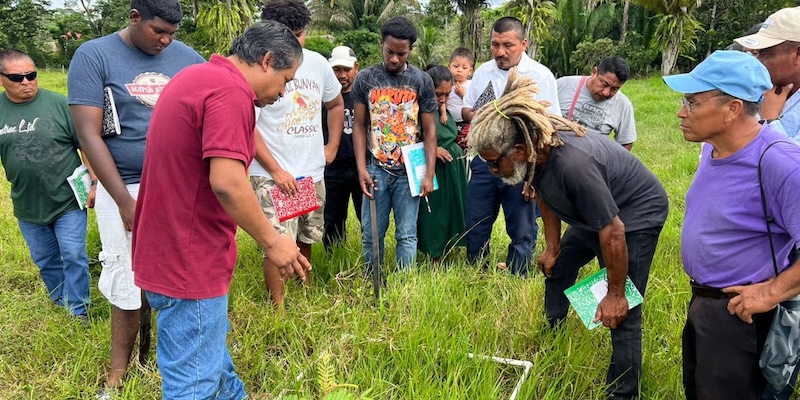
Participants engage in a course about the use of the quadrant as a practical tool for assessing pasture health and estimating biomass. Photo: BLPA
Inclusive learning approaches
Farmers participating in the field schools come from diverse backgrounds, ethnicities and education levels. To ensure no one was left behind, BLPA hired a bilingual lead trainer and formed mixed groups where peers could support one another in both English and Spanish.
“The other farmers in the learner group explained to me in my language some of the things discussed in the trainings. I want to say thanks for taking extra time to teach me. This training has opened my eyes to be able to see new ways to manage my pasture.” – Felipe Ba
Thanks to these efforts, all 114 farmers established silvopastoral practices on their farms. They now use paddocks to rotate cattle and avoid overgrazing. Each farmer has also set aside a 0.4-hectare plot as a combined forage and seed bank, resulting in 120 seed banks across the region.
“We are most proud of seeing the mind shift in farmers. At first, they were all for slash and burn in the traditional milpa system used in Belize, but after learning about the water cycle and silvopastoral systems, we can see that changes have started in their minds. In 2024, most farmers involved in the initiative did not cut down trees for pasture, as they realized trees have many benefits as part of a silvopastoral system.” – William Usher, Chief Executive Officer at the Belize Livestock Producers Association
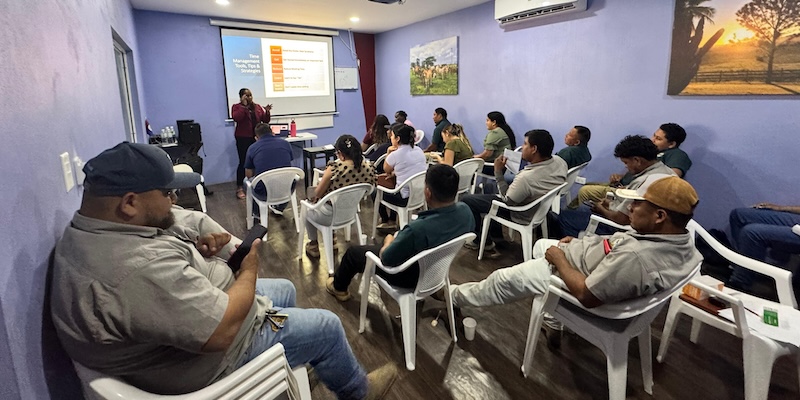
BLPA technical staff participate in customer service training aimed at strengthening their capacity to better support and serve the Association’s membership. Photo: BLPA
Building long-term resilience
BLPA has observed that farmers are now investing more in grass seeds, improving pasture coverage by up to 70 percent. With forage banks in place, farmers report a reduced need for government assistance during the dry season.
The changes are also inspiring neighbouring livestock producers. Graduates of the field schools are now being hired to help others apply rotation systems and establish improved pastures. One example is Jose Cho, a Toledo District farmer who is now supporting other Belizean farmers in adopting these practices. The Ministry of Agriculture has taken notice as well, encouraging wider adoption of silvopastoral systems as part of the country’s sustainable development efforts.
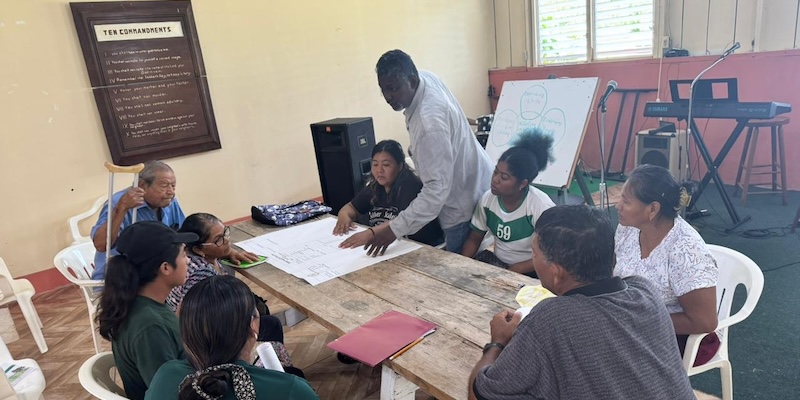
Farmer Field School participants develop their 10-year strategic farm plans, a fully participatory process to define long-term goals for productivity, resilience and income growth. Photo: BLPA
A pathway for national transformation
Silvopastoral systems show strong potential for expansion across Belize. The initiative envisions a future where these practices become the new standard for cattle production—boosting farmers’ resilience, protecting forests and contributing to a greener national economy. With healthy pastures, year-round feed and improved livestock conditions, farmers can strengthen their livelihoods without clearing valuable forest areas.
Supported by financial contributions from the Adaptation Fund and the European Union, the UNDP-AFCIA programme has awarded 44 micro and small grants to locally led organizations across 33 countries worldwide, accelerating their innovative solutions to build resilience in the most vulnerable communities.
UNDP-AFCIA is one of two featured programmes under the Adaptation Innovation Marketplace (AIM), a multi-stakeholder strategic platform that promotes scaled-up adaptation at the local level.

